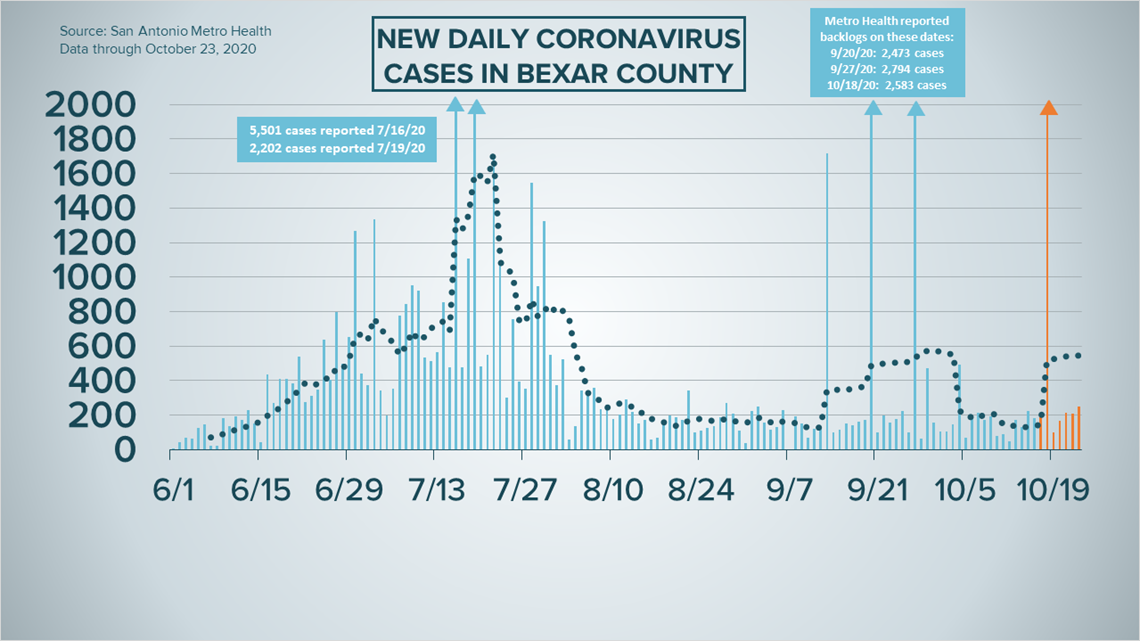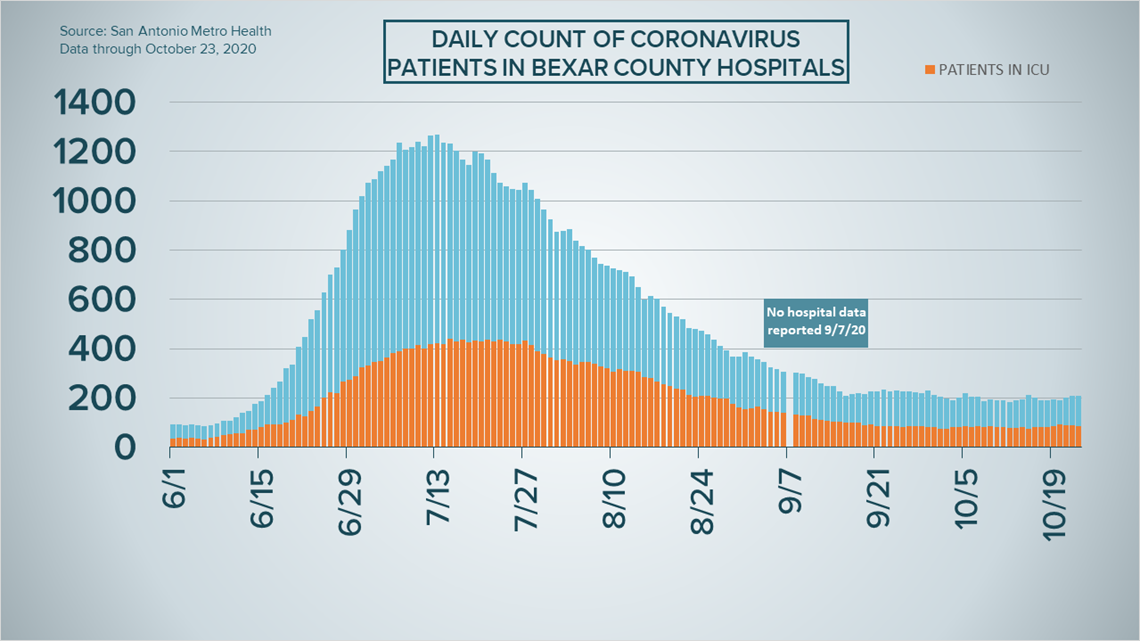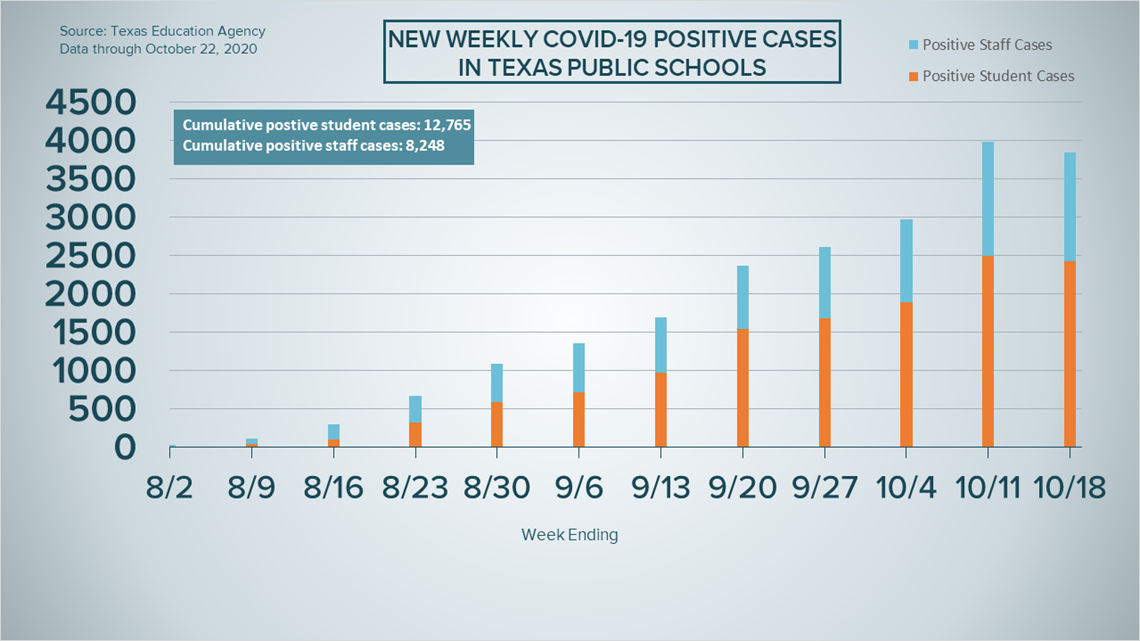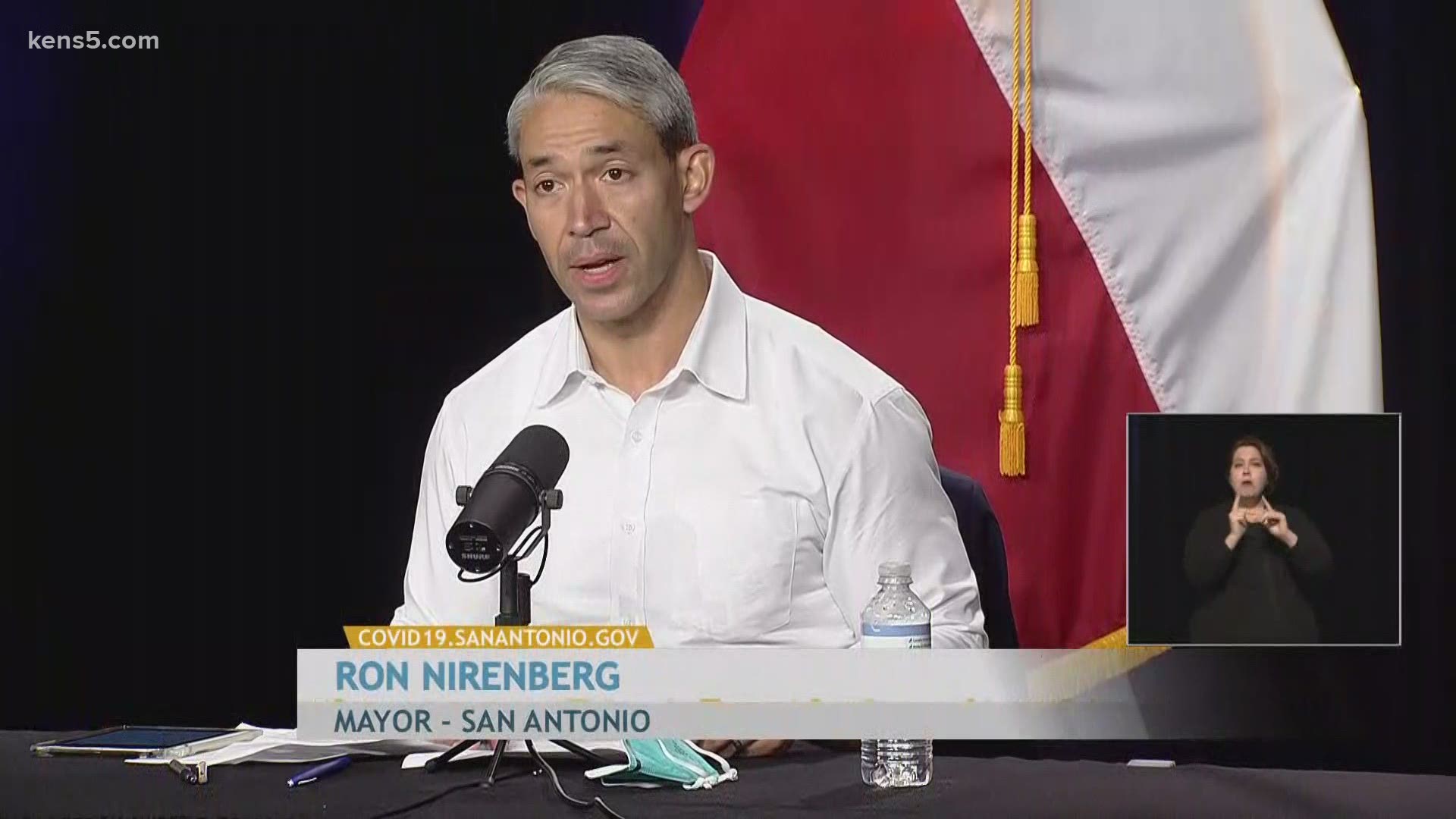SAN ANTONIO — We're tracking the latest numbers from the coronavirus pandemic in San Antonio and across Texas. Here are the latest numbers reported by Bexar and surrounding counties:
- Bexar County: 247 new cases were reported Friday, bringing the total number of cases for the county to 64,261. No new deaths were reported; the county's death toll remains at 1,232.
- Comal County: The county reported eight additional cases and no new virus-related deaths on Friday. There have been a total of 3,701 cases of COVID-19 in the county – including 2,841 confirmed cases – while 120 county residents have died. County officials say there are 97 active coronavirus cases, and 3,484 residents are considered recovered.
- Hays County: Officials in Hays County on Friday reported 19 new cases in the county as well as 22 additional virus-related deaths, all of which are connected to a change in reporting protocols from the Texas Department of State Health Services. As of Friday, there are a total of 6,287 lab-confirmed cases in the county (510 of which are active) while the death toll rose at 86. 5,691 residents have recovered from the virus.
How Bexar County is trending
We've tracked how many coronavirus cases have been confirmed in Bexar County from the time officials began reporting cases in March 2020. The graphic below shows the number of cases since June and charts those daily case numbers along a 7-day moving average to provide a more accurate picture of the overall coronavirus case curve in our area and the direction we're trending amid the pandemic.
On Friday, San Antonio Mayor Ron Nirenberg reported an additional 247 COVID-19 cases for Bexar County, bringing the total number of cases to 64,261 since the pandemic began. Friday marks the third straight day of more that 200 newly reported cases, the first such three-day span since August 11-13. The county's seven day moving average rose to 177.
The death toll from virus complications remains at 1,232 after no new fatalities were reported.


The number of Bexar County residents receiving treatment for COVID-19 symptoms dropped by one on Friday, to 208. 36 of those patients are on ventilators and 85 are in intensive care.


Coronavirus in Texas
The number of Texans who have tested positive for the coronavirus since the pandemic began grew by 6,472 on Friday, according to the Texas Department of State Health Services.
5,760 of those are new diagnoses over the last 24 hours, while the other 712 cases stem from a number of backlogs in several counties. More details can be found at the top of this page. In all, 851,572 Texans have tested positive for COVID-19.


State health authorities also reported 89 additional virus-related deaths on Friday. At least 17,375 Texans have passed away from COVID-19 complications.
Meanwhile, COVID-19-related hospitalizations jumped once again, continuing a trend in the wrong direction for the state. 134 more Texans were receiving treatment for COVID-19 than Thursday, bringing the current total to 5,065. Friday marked the first time state hospitalizations due to COVID-19 were above 5,000 since August 24, In the last week, hospitalizations have risen 19.2%. Since Oct. 1, they've risen by 58.7%.
Health officials warn that the state is currently in another surge. Experts attribute the spike in COVID-19 numbers to "pandemic fatigue."
The state estimates that 744,283 Texans have recovered, while 85,618 Texans remain ill with COVID-19.
Meanwhile, the Texas Education Agency updated its online coronavirus database to show that there have been 21,013 cumulative cases among staff and students across the state as of Oct. 22. More information can be found here.


The TEA releases new data on school cases every Thursday.
Latest Coronavirus Headlines
- Report: San Antonio's small business recovery from COVID-19 worst in the state
- VERIFY: Study shows mouthwash may inactivate coronavirus, but not a cure
- Wassailfest 2020 in New Braunfels canceled due to COVID-19 concerns
- Social distancing, masks, required for 'no touch' White House Halloween event
- Costco selling COVID-19 saliva test kits
- Still wiping your groceries down with Lysol? Experts say that's not necessary
- Pope met COVID-19 infected bishop at Vatican, report says
Coronavirus symptoms
The symptoms of coronavirus can be similar to the flu or a bad cold. Symptoms include fever or chills, cough, shortness of breath or difficulty breathing, fatigue, muscle or body aches, headache, new loss of taste or smell sore throat, congestion or runny nose, nausea or vomiting and diarrhea, according to the Centers for Disease Control.
Most healthy people will have mild symptoms. A study of more than 72,000 patients by the Centers for Disease Control in China showed 80 percent of the cases there were mild.
But infections can cause pneumonia, severe acute respiratory syndrome, kidney failure, and even death, according to the World Health Organization. Older people with underlying health conditions are most at risk.
But infections can cause pneumonia, severe acute respiratory syndrome, kidney failure, and even death, according to the World Health Organization. Older people with underlying health conditions are most at risk.
Experts determined there was consistent evidence these conditions increase a person's risk, regardless of age:
- Chronic kidney disease
- COPD (chronic obstructive pulmonary disease)
- Obesity (BMI of 30 or higher)
- Immunocompromised state (weakened immune system) from solid organ transplant
- Serious heart conditions, such as heart failure, coronary artery disease, or cardiomyopathies
- Sickle cell disease
- Type 2 diabetes
The CDC believes symptoms may appear anywhere from two to 14 days after being exposed.
Human coronaviruses are usually spread...
- Between people who are in close contact with one another (within about 6 feet).
- Through respiratory droplets produced when an infected person coughs, sneezes or talks. These droplets can land in the mouths or noses of people who are nearby or possibly be inhaled into the lungs.
- Some recent studies have suggested that COVID-19 may be spread by people who are not showing symptoms.
Help stop the spread of coronavirus
- Stay home when you are sick.
- Eat and sleep separately from your family members
- Use different utensils and dishes
- Cover your cough or sneeze with your arm, not your hand.
- If you use a tissue, throw it in the trash.

